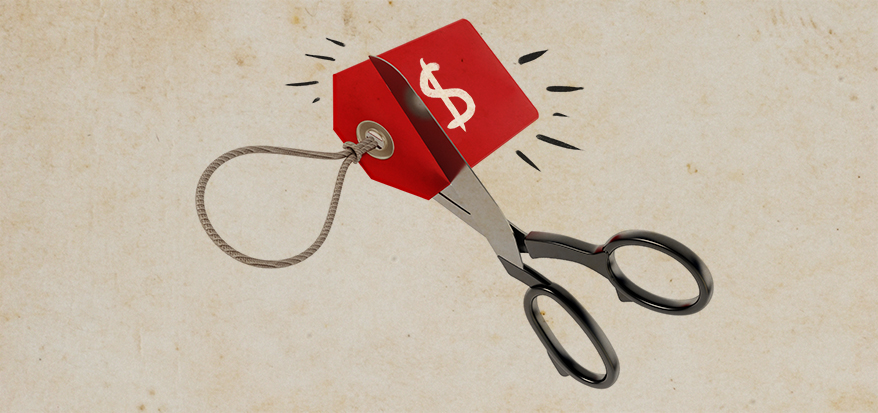
A couple of strategic moves can lower your taxable income and boost your cash flow.
During tax time, wouldn’t it be great to lower your taxes and get a boatload of cash as well?
You can and it’s all legal.
On your tax return, any inventory sold increases your cost of goods sold by the appropriate decrease in inventory. For example, if you sell a ring that costs you $200 and sells for $425:
- Sales go up by $425
- Inventory is lowered by $200
- Cost of goods sold also goes up by $200
- Taxable profit = $225
But what if inventory went down by $350, cost of goods went up by $350 but income stayed the same?
The result is that your taxable profit on the ring is now only $75. That will make a big savings in taxes.
Advertisement
Some jewelers and accountants devalue or lower inventory value on the books (inventory decreases and cost of goods sold increases, and voila, taxable income is lower). But if you only lower your taxes, you don’t get any cash.
If you have a $200 at-cost ring for three years, it’s tagged at $425, and you and your CPA lower the cost on your financials, it’s still at $200 in your inventory program. In addition, no one has bought this dog in three years; why wait for it to have a fourth birthday? Between you and your accountant, you have two options. One is just “OK” while the other is much better.
Option 1: “OK”
If you’re going to lower inventory to save taxes by, for example, $50,000 and keep the inventory in the case, you should do “tit for tat”. Go into your inventory program and lower the cost of a whole bunch of items by $50,000 in total and lower the selling prices as well!
In this example, lower the $200 cost of the item to $100 and lower the selling price to $325. Your inventory dollars in the POS program will now match the balance sheet amount on the tax return, and you have just given that 3-year-old item another chance at being a star!
This will lower taxable income and help to sell the old item.
So far, we have legitimately lowered our taxable income and adjusted three things:
Advertisement
- Tax return shows lowered inventory and thus higher cost of goods/write-off.
- Accounting program inventory is lowered as well to match.
- A whole bunch of items in our POS program have also been lowered.
Option 2: Much Better
If you leave that 3-year-old item in the case at a lower price point, it might sell. But it is old and its chance of selling is still low.
The best thing to do is to remove it from inventory at its original cost. Forget taking a $100 write-off; write off the whole thing.
How does this work? Simple: by scrapping old inventory. But you must really scrap it! No “writing it off on the books”.
Most POS programs have a button to “Scrap” an item. It will remove it from inventory (lowering inventory) in the POS program.
An integrated POS program will also lower inventory on the balance sheet in QuickBooks and send that $200 to a cost-of-goods or expense account. (You might have to do this manually.) Now you’ve increased cost of goods by $200 rather than $100. But now that you’ve “written it off,” take that ugly sucker out of the case and send it to a refiner or dealer and get whatever money you can for it! Get cash and save on your taxes.
What will this accomplish for you? Lots:
Advertisement
- Lowers taxable income
- Gets rid of inventory that customers have seen over and over again
- Gives the store a fresh look
- Raises sales staff morale
- Brings in cash
- Cash allows you to lower accounts payable and also allows you the room to stock fresher, more salable inventory, which will increase sales
If you scrapped a bunch of old stuff, would your cases look less crowded and prettier?
Your bank account would.
David Geller is a consultant to jewelers on store management. Email him at dgeller@bellsouth.net.
This article originally appeared in the April 2017 edition of INSTORE.